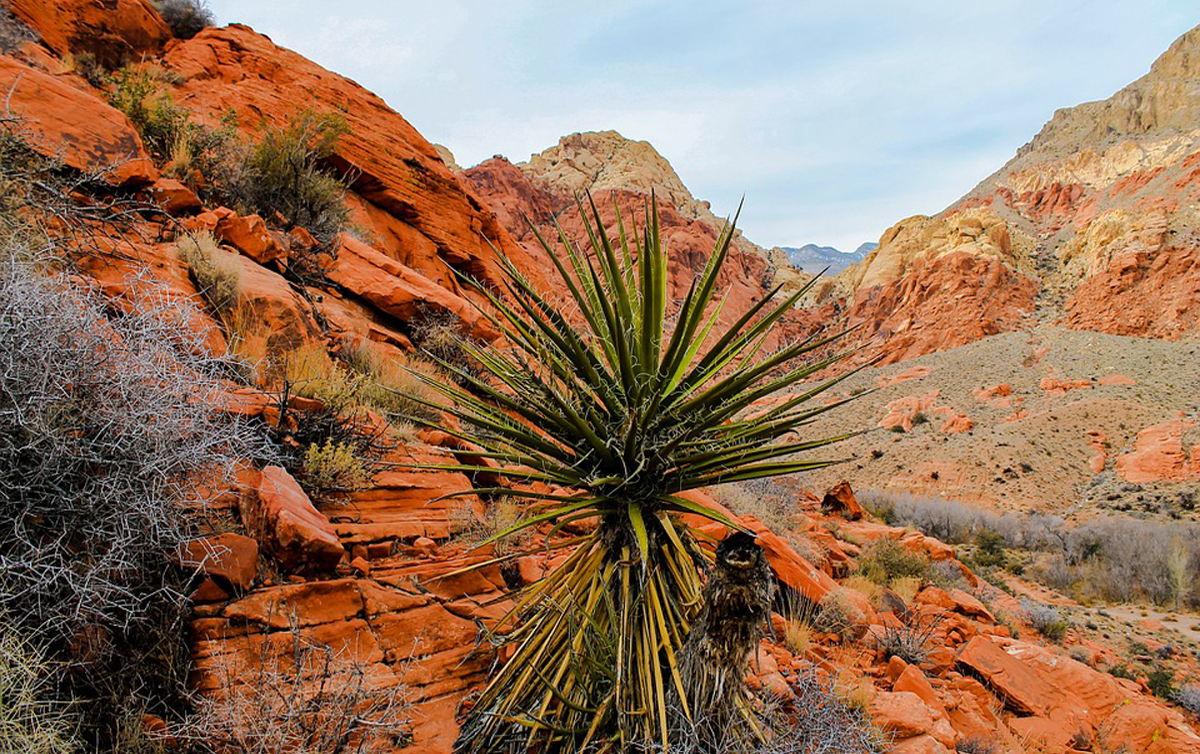 Utah descendants of “The Long Walk” commemorate Navajo Treaty of 1868
Utah descendants of “The Long Walk” commemorate Navajo Treaty of 1868
By Alastair Lee Bitsoi
Mary Benally and her family have always called Bears Ears home. Her Diné ancestors were force-marched on the 1864 Long Walk and held captive for four long years. They eventually made their return to Diné Bikéyah (Home of the Holy Earth Surface People) through the Navajo Treaty of 1868.
Benally, who is a Utah Diné Bikéyah board member, traces both her Diné and Hopi heritage to Bears Ears. Her great-great-great grandmother was Hopi and was married to a Diné man from the region. This grandmother eventually had children, including one of Benally’s maternal grandmothers, who was born north of the Bears Ears Buttes.
“When Kit Carson was rounding up the Navajos, they were told a story that the federal people in Fort Defiance were giving out food or seeds to the people out there,” Benally said. “Believing that, people started going to Fort Defiance from the San Juan River and what is now the Bluff, Utah area. It turned out that they were captured there and were forced on the Long Walk.”
Benally’s family history remains alive through oral tradition, even 150 years after the Navajo Treaty of 1868 was signed between Headman Manuelito, who was also born near the Bears Ears Buttes, and other Navajo headmen and the U.S. government.
With the official Navajo Treaty of 1868 being unveiled to the public at the Navajo Nation Museum in Window Rock, Arizona, today, Benally also relishes the fact that her Diné family has long lived in the Bears Ears area and has family stories involving their survival of the Long Walk from over 150 years ago. Benally’s Diné ancestors were among the first to move back to the San Juan River area from the Long Walk. However, she recounted that other Diné bands were never captured by the U.S. government. They lived at the confluence of Comb Ridge Wash and the San Juan River.
“They never went on the Long Walk. They lived in the canyons, hid there somewhere,” Benally said, recounting her history lesson. “I was told by my elders that when they moved back into the area, there were some Utes just roaming around the area. Since they had livestock, the Utes use to come to their place and they used to give food to the Utes.”
Benally’s story shows how the Navajo Treaty of 1868 and the Bears Ears region are intimately connected, as the western canyons of Bears Ears National Monument served as a refuge or escaping area for several Diné bands/families. Locals like Willie Grayeyes, Chairman of the UDB board, know that Bears Ears plays a significant role with the Navajo Treaty of 1868, which acknowledges the government-to-government relationship that the Navajo Nation has with the United States. The Navajo Treaty of 1868 is a significant part of the history of the original boundaries of the Bears Ears National Monument, which is currently threatened. Presently, Utah Diné Bikéyah is engaged in a lawsuit that questions the legality of the Trump Proclamation, which slashed the Bears Ears National Monument by 1.1 million acres.
“Bears Ears National Monument is tied to Headman Manuelito and his brother, K’aayeeli,” Grayeyes said. “They were both born near the Bears Ears Buttes.”
From his standpoint, the Diné people had a Bears Ears presence beyond the Navajo Treaty of 1868. He knows of a Diné Hogan in the White Canyon area of Bears Ears, which dates back to over 1,300 years ago.
“As evidence provides, Diné ties to Bears Ears were way before the Treaty,” Grayeyes said, before adding, “Probably as far as back as maybe 11,000 years. The Navajos had use to those regions.”
Regarding Headman Manuelito, Grayeyes said that the leader moved his band through ancestral and current Diné territory, including toward the Black Mountains (now Black Mesa, AZ of the Navajo Nation) and to Gray Mountain, Ariz., in an effort to avoid capture. Eventually, they ran out of food and heard that food rations were being distributed in Fort Defiance, Arizona. It was there at Fort Defiance that Manuelito and his band were captured and forced marched on the Long Walk.
As a teenager, Manuelito learned Diné rites and ceremonies, which Grayeyes says helped thousands of Diné held captive for four years from 1864–68, until he and other Diné leaders signed the Navajo Treaty of 1868.
“He was the one that said that this treaty will provide a ladder for our children to educate themselves, which is a very profound statement in terms of looking at our future,” Grayeyes said. “He had the foresight to express those thoughts about the future of the Navajo.”
Even while Diné such as Manuelito negotiated on behalf of the Diné people to return to Diné Bikéyah, Grayeyes and Jonah Yellowman, also a Utah Diné Bikéyah board member, note that those Diné bands that took refuge in the Bears Ears region could have, in part, helped their imprisoned relatives escape from the four-year internment.
The Diné bands that escaped capture include the K’aayeeli, Big Horse, and Hashké Neiniih (Spreading Anger) bands. These bands came together and hid out at the confluence of the Colorado and San Juan Rivers at what is now Lake Powell, Grayeyes said.
“There were numerous trips done by these people, who went down into the canyons and went on top of Navajo Mountain and did their offerings, prayed, performed ceremonies,” Grayeyes said. “Four years later, but I don’t know how they found out, but they heard that their people were released back.”
Similarly, Yellowman added that it is likely those captured at Fort Sumner and those that took refuge in the Bears Ears region interchangeably issued ceremonies for their eventual release. Even now, Yellowman says that he continues to pray for relatives who are in the military overseas to safely return home.
“This is what they probably did. That’s what I would do and I think that’s what they did,” Yellowman said. “The American government probably rounded-up some Diné, but we did not surrender. That’s what my people say.”
Yellowman traces his lineage to Diné leaders born at Bears Ears, and says that ancestral Diné of today are still trying to go home to Bears Ears from the Long Walk. Of course now, the ancestral Native land in Bears Ears is considered public lands. This struggle to return to and maintain homelands and protect cultural practices in Diné Bikéyah continues today in the fight to protect the Bears Ears National Monument.
Restoring Bears Ears National Monument to its original boundary at the confluence of the Colorado and San Juan Rivers is the main reason Yellowman supports the ongoing litigation. These original boundaries protect these places of cultural and historic importance, and the history of Manuelito and the bands that evaded capture are only a few among many of the significant places within these boundaries.
“It’s very sacred,” Yellowman adds. He recounts that the Bears Ears plays a key role, not only in Diné history and the Navajo Treaty of 1868 but as a central place of healing.
“It’s a place that is a holistic place for us,” he said. “It is a place to heal people and come back together and share something.”
Articles related to “Utah descendants of ‘The Long Walk’ commemorate Navajo Treaty of 1868”
Do Utahns support Bears Ears National Monument, and if so how much?
Heritage tourism in Bears Ears may be a model for sustainable development in Utah
DOI spills ink on why to shrink Bears Ears National Monument



